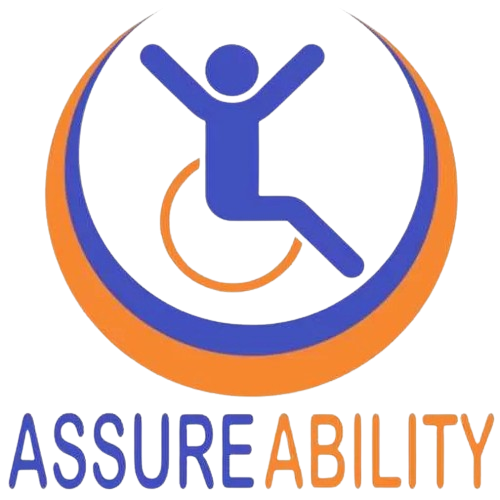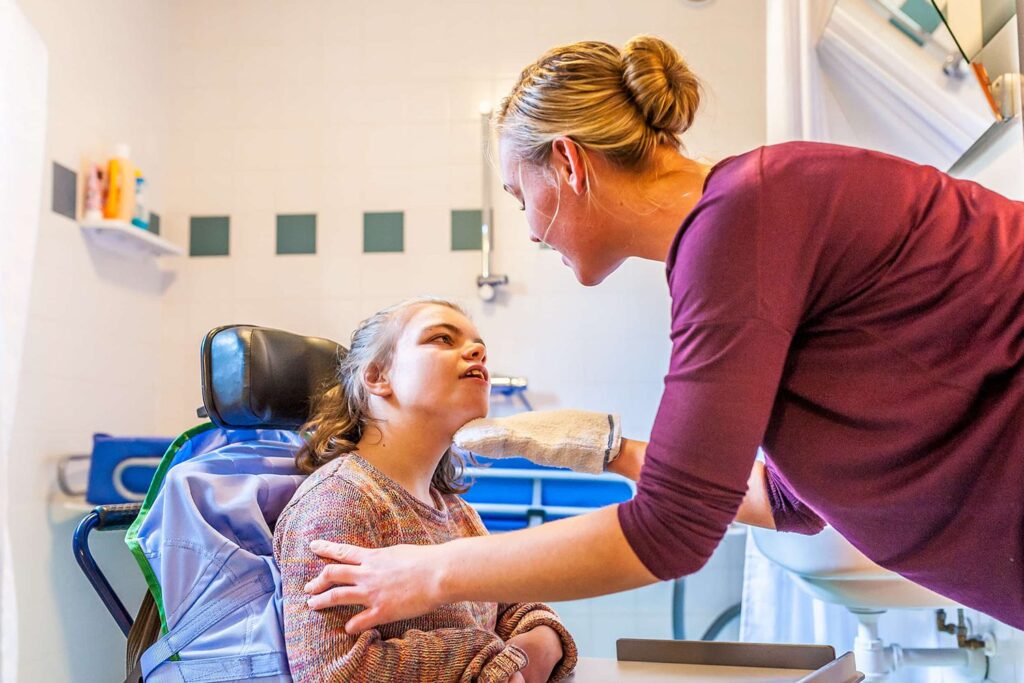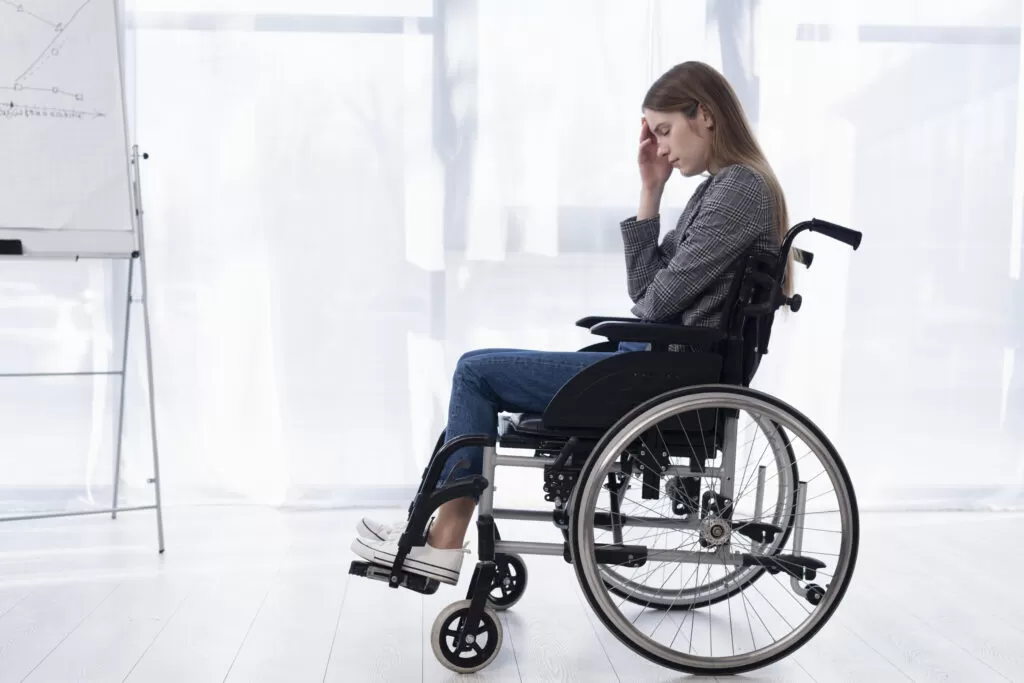In this article, we delve into the transformative power of inclusive education for students with disabilities. We address a pressing problem that has long plagued our education system – the exclusion of marginalized individuals from a quality education. Prepare to gain a deeper understanding of the numerous benefits that inclusive education brings, not only for those with disabilities, but for society as a whole. By the end of this article, you will be equipped with compelling evidence that supports the crucial need to foster inclusivity in our educational institutions. Let’s embark on a journey towards building a better future, where every student can thrive and contribute to societal progress.
Understanding Inclusive Education
Inclusive education, an approach that celebrates diversity and promotes equal opportunities for all students, has become a cornerstone of modern educational practices. It goes beyond mere integration by actively embracing the principles of equity and social justice. Inclusive education recognizes that every student, regardless of their abilities or disabilities, has the right to be educated in a supportive and nurturing environment that fosters their holistic development. This transformative educational model seeks to dismantle barriers that hinder the participation and engagement of students with disabilities. By adopting inclusive practices, schools create an atmosphere where differences are not only accepted but celebrated as valuable contributions to the learning experience. Students with disabilities are no longer seen as burdens or outsiders but as important members of a diverse community where everyone’s talents and potential are recognized.
This shift in perspective not only benefits students with disabilities but also creates a more enriching educational environment for all students. It opens doors for meaningful interactions and exchanges among peers from various backgrounds, fostering empathy, understanding, and acceptance. Inclusive education cultivates a sense of belongingness within the school community, promoting positive social relationships that transcend labels or stereotypes. Ultimately, it empowers students to embrace their unique identities while striving for personal growth and academic success within an inclusive society.
Benefits of Inclusive Education for Students with Disabilities
Inclusive education holds profound benefits for students with disabilities, fostering an enriched learning environment that empowers individuals to reach their fullest potential. By embracing diversity and providing equal opportunities, inclusive education paves the way for a brighter future for all. One significant benefit is the promotion of accessible learning environments that cater to diverse needs, ensuring that students with disabilities can fully engage in educational activities. Moreover, inclusive education nurtures the development of positive social relationships among students. It creates opportunities for peer interaction and fosters empathy and acceptance among classmates. Through shared experiences, friendships are formed, breaking down barriers and promoting a sense of belonging within the school community.
Furthermore, impressive academic achievements are witnessed through inclusive education. By tailoring instruction to individual needs, students with disabilities receive targeted support and instruction that maximizes their potential. This personalized approach enhances their academic performance and instills a love for learning, enabling them to excel in various subjects.
Inclusive education empowers students with disabilities to become self-advocates. It equips them with essential skills needed to express their needs and preferences effectively. This self-advocacy not only enhances their confidence but also prepares them for future challenges they may encounter outside the classroom.
Overall, inclusive education offers a transformative experience where students with disabilities thrive academically and socially as they prepare to build a better future filled with endless possibilities. Through increased access, positive relationships, academic achievement, and self-advocacy skills development; inclusive education sets the stage for an inclusive society that values diversity and champions equal opportunities for all.
Promoting Accessible Learning Environments
Promoting Accessible Learning Environments: Creating an inclusive educational setting begins with promoting accessible learning environments that cater to the diverse needs of students with disabilities. This means ensuring physical accessibility, such as ramps and elevators, to enable easy movement throughout the school premises. Additionally, classrooms should be equipped with assistive technologies like text-to-speech software and adaptive devices, allowing students to actively participate in classroom activities.
To enhance accessibility further, teachers can employ universal design principles when developing curriculum materials. By incorporating multiple modes of representation, such as visual aids and audio recordings, educators can accommodate different learning styles and engage students with varying abilities. Moreover, flexible seating arrangements and adjustable furniture promote comfort and facilitate collaboration among peers.
Furthermore, it is crucial for schools to foster a culture of inclusivity by raising awareness about disability rights and promoting acceptance among all members of the school community. This can be achieved through educational campaigns that emphasize diversity and encourage empathy toward individuals with disabilities. By embracing accessibility in all aspects of education, we empower students with disabilities to reach their full potential while creating a supportive environment that benefits everyone involved.
Building Positive Social Relationships
Building Positive Social Relationships: Inclusive education fosters the development of positive social relationships among students with and without disabilities. By bringing together a diverse group of learners, it creates an opportunity for meaningful interactions, empathy, and acceptance to flourish. In an inclusive classroom, students learn to appreciate each other’s unique strengths and challenges, forging bonds that go beyond superficial differences.
The presence of students with disabilities in mainstream classrooms promotes a culture of understanding and support. Peers without disabilities gain valuable insights into the lives and experiences of their classmates who may have different abilities. This exposure cultivates compassion, breaking down barriers that often stem from ignorance or fear. As a result, friendships are formed based on mutual respect and empathy.
Inclusive education also encourages collaborative learning environments where teamwork is essential for success. Students work together to solve problems, share ideas, and support one another’s learning journeys. These cooperative interactions not only enhance academic achievement but also create an inclusive atmosphere where everyone’s contribution is valued.
By promoting positive social relationships in inclusive classrooms, we are nurturing a generation equipped with empathy and acceptance—values that transcend the school environment. This foundation builds a better future where individuals with disabilities are embraced as valuable members of society while fostering a sense of unity among all students—a future that celebrates diversity and thrives on inclusivity.
Enhancing Academic Achievement
Enhancing Academic Achievement: Inclusive education paves the way for students with disabilities to excel academically, fostering an environment that supports their unique learning needs. By providing tailored accommodations and individualized support, students are able to fully engage in their educational journey. Specialized resources, such as assistive technology and modified curriculum, empower these students to overcome challenges and unlock their full potential.
Creative content: Imagine a classroom where every student’s strengths are celebrated and nurtured. In an inclusive setting, teachers employ various instructional strategies to cater to diverse learning styles, ensuring that all students have equal opportunities to thrive academically. Through differentiated instruction and personalized learning plans, educators foster a love for knowledge in each student, creating a vibrant atmosphere of collaboration and intellectual growth.
Thought-provoking content: Academic achievement is not solely measured by grades or standardized test scores; it encompasses the joy of discovery, the development of critical thinking skills, and the cultivation of a thirst for lifelong learning. Inclusive education recognizes this holistic approach by cultivating an environment where academic success is defined by personal growth rather than arbitrary benchmarks. Students with disabilities are encouraged not only to meet academic standards but also to explore their passions and talents in a supportive community.
Optimistic spin: Inclusive education not only levels the playing field for students with disabilities but also enriches the entire educational experience for everyone involved. As these students thrive academically, they inspire their peers and contribute unique perspectives that enhance classroom discussions. By embracing diversity in all its forms, inclusive education sets forth a vision of academic achievement that celebrates individual progress while nurturing collective excellence
Encouraging Self-Advocacy Skills
Encouraging Self-Advocacy Skills: In the journey of inclusive education, fostering self-advocacy skills in students with disabilities is pivotal. Empowering these individuals to express their needs, preferences, and goals is essential for their personal growth and success. By embracing self-advocacy, students gain the confidence to navigate through academic and social challenges, becoming active participants in shaping their own educational experiences.
Unlocking the potential of self-advocacy begins with nurturing effective communication skills. Providing platforms for students to express themselves assertively helps them articulate their thoughts and assert their rights. Additionally, educators can engage students in activities that encourage critical thinking and decision-making, enabling them to identify areas where they require support or accommodations.
Through self-advocacy, students develop a sense of ownership over their learning journey while building resilience and determination. They become architects of their dreams, advocating for necessary accommodations or modifications that promote equal access to education. This empowerment cultivates a sense of agency within individuals with disabilities, fostering a belief in themselves as capable contributors to society.
Remember: by empowering students with self-advocacy skills today, we are equipping them to become confident leaders of tomorrow’s inclusive world.
Developing Empathy and Acceptance Among Peers
Developing Empathy and Acceptance Among Peers: In fostering inclusive education, one of the significant benefits lies in the development of empathy and acceptance among peers. By including students with disabilities in mainstream classrooms, we provide an opportunity for all students to experience diversity firsthand. This exposure allows them to gain a deeper understanding of the unique challenges faced by their peers, encouraging empathy and compassion.
Through various activities and discussions, teachers can facilitate conversations that promote acceptance and break down barriers. By sharing personal experiences and highlighting the strengths of individuals with disabilities, students learn to appreciate differences rather than fear or stigmatize them. This shift in mindset not only enhances social interactions within classrooms but also extends beyond school walls, creating a more inclusive society.
A creative activity that can foster empathy is a “Walk in Their Shoes” exercise. Students are paired up and assigned to spend a day shadowing their partner who has a disability. Through this immersive experience, they gain firsthand insight into the daily hurdles faced by someone with different abilities. This exercise encourages reflection on their own privileges while fostering empathy towards others’ unique experiences.
By nurturing empathy and acceptance from an early age within educational settings, we are sowing the seeds for a future generation that values inclusivity, equality, and diversity—the very foundation of building a better future for all.
Collaboration and Teamwork: Fostering Inclusive Learning Communities
Collaboration and Teamwork: Fostering Inclusive Learning Communities When it comes to inclusive education, collaboration and teamwork play a crucial role in fostering an environment that embraces diversity. By encouraging students, teachers, parents, and other stakeholders to work together harmoniously, inclusive learning communities can be formed. These communities provide a supportive network where everyone feels valued and included.
In an inclusive learning community, collaboration takes on many forms. Teachers collaborate with one another to share best practices and develop innovative strategies that cater to the unique needs of each student. Parents collaborate with educators by actively participating in their child’s education journey, providing valuable insights about their child’s abilities and challenges. And most importantly, students collaborate amongst themselves, forming bonds of friendship that transcend differences in abilities or backgrounds.
This emphasis on collaboration not only enhances the academic experience for students with disabilities but also teaches invaluable life skills such as teamwork, communication, empathy, and acceptance. By working together towards common goals within an inclusive learning community, students learn the importance of supporting one another and celebrating individual strengths. This collaborative spirit creates a positive atmosphere that fosters personal growth and boosts self-confidence – empowering every student to reach their full potential.
So let us embrace collaboration and teamwork as key pillars of inclusive education – for it is through these efforts that we can build stronger bonds between individuals from diverse backgrounds and create a better future for all students with disabilities.
Addressing Challenges and Overcoming Barriers:
Navigating the complex terrain of inclusive education inevitably presents educators with various challenges. One primary hurdle is the lack of resources and support necessary to accommodate diverse learning needs. However, through innovative approaches and unwavering determination, these barriers can be successfully surmounted. By fostering collaborative partnerships between teachers, parents, and community stakeholders, schools can secure additional funding and specialized services to meet the unique requirements of students with disabilities. This collective effort ensures that every learner has equal access to a quality education, bolstering their chances for personal growth and success. Another challenge lies in dispelling misconceptions surrounding inclusive education. Some individuals may hold preconceived notions about the limitations of students with disabilities or fear that their presence in mainstream classrooms may hinder academic progress for other students. It is vital to address these concerns by providing comprehensive training programs for educators and raising awareness among parents and communities. By highlighting success stories of inclusive educational models from around the world, we can inspire a shift in mindset towards embracing diversity as an enriching asset that benefits all learners.
Furthermore, fostering a supportive school culture that celebrates differences plays a pivotal role in overcoming barriers to inclusion. This requires instilling empathy and acceptance among both students and staff members. Implementing anti-bullying campaigns, organizing disability awareness events, and integrating social-emotional learning into curricula are effective strategies to cultivate an inclusive environment where everyone feels valued and respected. By nurturing this compassionate ethos within schools, we create spaces where students with disabilities can thrive academically while also developing crucial life skills necessary for their future endeavors
Supporting Teachers in Inclusive Education
Supporting Teachers in Inclusive Education: Teachers play a crucial role in creating inclusive learning environments that cater to the diverse needs of students with disabilities. To support teachers in this endeavor, comprehensive professional development programs need to be implemented. These programs should provide educators with the necessary knowledge and skills to effectively address the individualized needs of all students.
One key aspect of supporting teachers is providing them with ongoing training and resources that focus on inclusive instructional strategies. This includes understanding different learning styles, employing differentiated instruction techniques, and utilizing assistive technologies to enhance engagement and participation for all students. By equipping teachers with these tools, they can create a classroom environment that promotes equal opportunities for learning and success.
Furthermore, collaboration among educators is essential in supporting teachers in inclusive education. Encouraging team-teaching models, where general education and special education teachers work together, ensures that expertise is shared and resources are maximized. This collaborative approach fosters an inclusive learning community within the school setting, promoting a sense of belonging for both students with disabilities and their peers.
In conclusion, by providing ongoing training, resources, and fostering collaboration among educators, we can offer valuable support to teachers in implementing inclusive education practices. When teachers feel empowered and equipped to meet the unique needs of every student in their classroom, they can create an environment where all students thrive academically and socially. Embracing inclusivity not only benefits students with disabilities but also contributes to a brighter future built upon empathy, acceptance, and equal opportunities for all learners
Successful Examples and Case Studies
Successful Examples and Case Studies: In a remarkable case study from the bustling metropolis of Mumbai, India, the Swavalamban School for Inclusive Education has become a shining beacon of hope for students with disabilities. With its innovative approach to inclusive education, Swavalamban has transformed the lives of countless children by providing them with equal opportunities and access to quality education. Through personalized learning plans, assistive technologies, and specially trained teachers, this school has successfully empowered students with disabilities to unleash their full potential.
On the other side of the world in Toronto, Canada, the Lakeside Elementary School stands as a testament to how inclusive education can foster a sense of belonging and promote academic excellence. Within its vibrant classrooms and diverse student body, Lakeside embraces an inclusive environment where individual differences are celebrated. By implementing collaborative teaching strategies and integrating various support services such as speech therapy and occupational therapy seamlessly into daily lessons, Lakeside ensures that every student receives customized attention tailored to their unique needs.
In an uplifting success story from Nairobi, Kenya, the Kijiji Learning Center has emerged as a pioneer in inclusive education for students with disabilities in rural areas. Overcoming logistical challenges and limited resources with unwavering determination, Kijiji has implemented innovative teaching methods that cater to diverse learning styles while valuing cultural diversity. By involving parents in their child’s educational journey through regular workshops and providing vocational training opportunities for students nearing graduation age, Kijiji instills hope in both children and their families by paving a pathway toward brighter futures full of possibilities.
Conclusion In conclusion, the pivotal role of inclusive education in shaping a better future for students with disabilities cannot be overstated. By fostering accessible learning environments, promoting positive social relationships, enhancing academic achievement, and developing self-advocacy skills, inclusive education creates a transformative educational experience that empowers students to thrive. As we embrace the principles of inclusivity and work towards breaking down barriers, we pave the way for a society that celebrates diversity and ensures equal opportunities for all. Let us envision a future where every student feels valued and included, where their unique talents contribute to the tapestry of humanity, and where compassion and acceptance are the guiding principles that drive our educational systems forward. Together, we can build a brighter tomorrow for all learners. In summary, inclusive education is the key to unlocking the full potential of students with disabilities and creating a more equitable and compassionate society. For a future that embraces diversity and ensures equal opportunities, inclusive education is essential for unlocking the potential of students with disabilities. Assure Ability can support you on this journey, so contact us on 1300 263 544 or email info@assure-ability.com.au.









